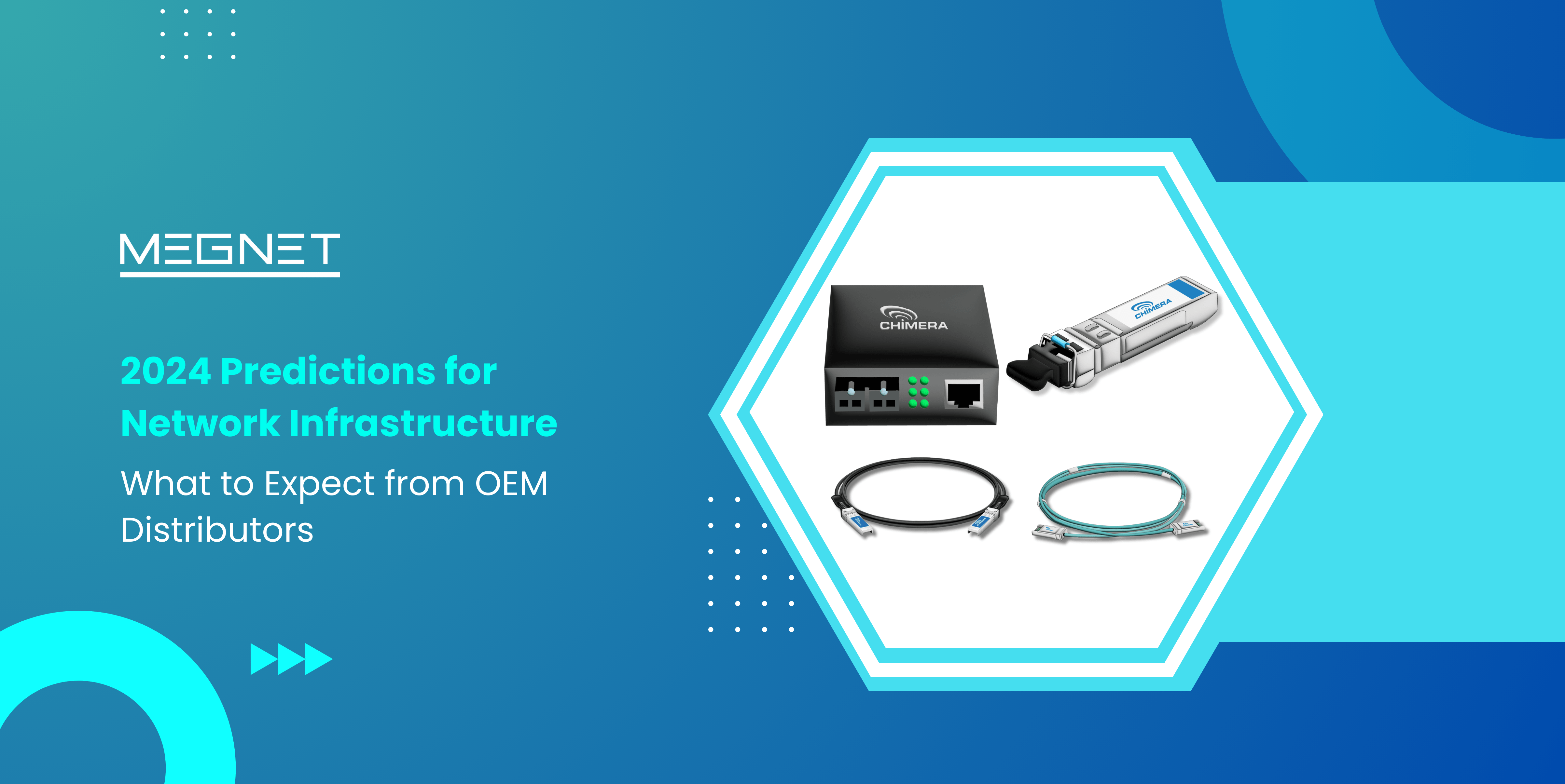
2024 Predictions for Network Infrastructure: What to Expect from OEM Distributors
As the backbone of our increasingly digital world, network infrastructure is crucial for personal communications, business operations, and the burgeoning Internet of Things (IoT). Original Equipment Manufacturer (OEM) distributors, providing essential components and solutions, are central to this transformation. This blog delves into key predictions for network infrastructure in 2024 and examines the critical role OEM distributors will play.
Understanding emerging networking trends is increasingly important for IT professionals and companies of all sizes to stay competitive.
“The global network infrastructure market is expected to reach $197.8 billion by the end of 2024 and increase to $256 billion by 2028 at a compound annual growth rate (CAGR) of 6.67%. This is a projected $58.2 billion increase in just four years.”
The Role of OEM Distributors in Enhancing High-Speed Connectivity
High-speed connectivity is no longer a luxury but a necessity for modern businesses and consumers. The increasing reliance on cloud services, video conferencing, online gaming, and other bandwidth-intensive applications means that network infrastructure must evolve to keep pace.
Strategic Initiatives:
• Product Innovation: OEM distributors must continuously innovate to develop products that can handle higher bandwidths and lower latency. This includes not only improving existing products like DAC cables and optical transceivers but also exploring new technologies such as silicon photonics and terabit networking.
• Collaborations and Partnerships: Collaborating with telecom operators, data centres, and other stakeholders can help OEMs better understand market needs and tailor their offerings accordingly. Joint ventures and partnerships can also facilitate faster deployment of high-speed solutions.
The Unprecedented Rise of High-Speed Connectivity
The relentless pursuit of speed has transformed high-speed connectivity from a luxury to a necessity. The proliferation of cloud services, video conferencing, online gaming, and immersive technologies has created an insatiable appetite for bandwidth. To keep pace with these demands, network infrastructure must evolve rapidly.
OEM distributors are at the forefront of this evolution. They are instrumental in delivering the components and solutions required to build high-speed networks. By focusing on product innovation, strategic partnerships, and a deep understanding of market dynamics, OEM distributors are empowering businesses and individuals to harness the full potential of high-speed connectivity.
- Product Innovation: OEM distributors are investing heavily in research and development to create cutting-edge products capable of handling the increasing data loads. This includes advancements in DAC cables, optical transceivers, and exploring emerging technologies like silicon photonics and terabit networking.
- Strategic Partnerships: Collaborations with telecom operators, data center providers, and other industry stakeholders enable OEM distributors to gain valuable insights into market trends and customer needs. Joint ventures and partnerships can accelerate the development and deployment of high-speed solutions.
The Imperative of Sustainability in Network Infrastructure
As environmental concerns gain prominence, the networking industry is under pressure to reduce its carbon footprint. OEM distributors have a significant opportunity to contribute to a greener future by developing sustainable networking products and solutions.
- Energy-Efficient Products: OEM distributors are focusing on creating energy-efficient switches, routers, and cooling systems to minimize the power consumption of data centers and other network infrastructure.
- Renewable Energy Integration: Exploring the integration of renewable energy sources into networking products and operations is a key area of focus for OEM distributors. This includes incorporating solar panels, wind turbines, and other sustainable energy technologies.
DAC Cables and Optical Transceivers: The Backbone of High-Speed Networks
Direct Attach Copper (DAC) cables and optical transceivers are the workhorses of modern data centers and enterprise networks. DAC cables excel in delivering low latency and high reliability for short-range connections, while optical transceivers are essential for long-distance data transmission with minimal signal loss.
OEM distributors like Megnet Limited are at the forefront of developing advanced DAC cables and optical transceivers that meet the demanding requirements of high-speed networks. By offering a wide range of products with varying performance characteristics, OEM distributors empower network architects to design and deploy optimal solutions for their specific needs.
Harnessing the Power of AI and Automation
Artificial Intelligence (AI) and automation are revolutionizing network management by enabling more efficient and proactive operations. OEM distributors are integrating AI into their products to enhance network performance, reliability, and troubleshooting capabilities.
- AI-Powered Network Management Systems: OEM distributors are developing AI-powered solutions that can predict and resolve network issues in real time, optimize network performance, and automate routine tasks.
- Partnerships with AI Companies: Collaborations with AI specialists can accelerate the development of AI-driven networking products and solutions, enabling OEM distributors to stay at the cutting edge of technology.
The Growing Importance of Cybersecurity
As networks become increasingly complex and interconnected, the threat landscape is evolving rapidly. Cybersecurity has become a top priority for businesses and individuals alike. OEM distributors are responding to this challenge by developing secure networking products and solutions.
- Security-by-Design Approach: OEM distributors are adopting a security-by-design approach, integrating robust security features into their products from the ground up.
- Threat Intelligence Sharing: Collaborating with cybersecurity experts and sharing threat intelligence can help OEM distributors develop products that are better equipped to defend against emerging threats.
The Future of OEM Networking Products Distributors
The network infrastructure landscape is constantly evolving, driven by technological advancements, changing customer demands, and emerging market trends. OEM networking products distributors are at the forefront of this transformation, playing a vital role in shaping the future of connectivity.
By focusing on innovation, sustainability, and customer-centricity, OEM distributors can position themselves as trusted partners for businesses and individuals seeking to build and maintain robust, high-performance networks. As the demand for high-speed connectivity continues to grow, OEM distributors are poised to capitalize on the immense opportunities presented by this dynamic market.
The Challenge of Network Complexity
As networks become increasingly complex, with a proliferation of devices, applications, and cloud services, network management is growing exponentially challenging. OEM networking products distributors are responding to this complexity by offering comprehensive solutions and services.
- Network Design and Implementation: Many distributors are expanding their capabilities to offer network design, implementation, and optimization services. This helps customers build efficient and scalable networks that meet their specific requirements.
- Managed Services: To address the growing demand for specialized network management expertise, distributors are providing managed services, such as network monitoring, troubleshooting, and security management.
- Training and Support: Offering comprehensive training programs and technical support helps customers maximize the value of their network infrastructure and ensures smooth operations.
The Rise of Edge Computing
The decentralization of computing power to the network edge is gaining momentum. OEM networking products distributors are playing a crucial role in supporting this trend by providing edge computing solutions and components.
- Edge Devices and Infrastructure: Distributors are expanding their product portfolios to include edge devices, such as edge servers, routers, and switches, as well as the necessary connectivity and management tools.
- Edge-to-Core Integration: OEM distributors are working closely with network equipment manufacturers to ensure seamless integration between edge devices and core network infrastructure.
- Edge Applications and Services: Distributors are exploring partnerships with software and application providers to offer comprehensive edge computing solutions tailored to specific industry verticals.
OEM distributors like Megnet Limited are driving innovation in these areas, developing products that cater to the ever-increasing bandwidth requirements. As the demand for high-speed connectivity grows, these products will become even more critical in maintaining efficient and effective network infrastructure.
Do You Know?
“42% of IT leaders and professionals say a network platform can greater support cross-domain management to unlock better performance, innovation, and cost savings”
These trends collectively paint a picture of a rapidly evolving networking landscape, where technology, security, and efficiency converge. For IT professionals, these trends are a roadmap to the future of network management, highlighting areas of growth and transformation.
Increased interest in network management signals a shift toward innovative, secure, and efficient cloud networks that offer greater flexibility in terms of long-term application storage and development while naturally reducing IT resource input.
Some valuable insights from these trends include:
- Investment in next-gen hardware infrastructure, such as base components for the new Wi-Fi 7 standard, will comprise a significant part of IT spend in the coming months.
- Network security management will be a major concern for enterprise IT leaders, companies looking to reduce potential weaknesses in their in-house networks, as well as innovators in this space.
- Overarching cloud costs will be an issue for decision-makers but investment into more robust cloud infrastructures, including the latest IaaS offerings, will be on a steady incline in the next several years.
- More companies will look toward edge computing to optimize processing power by moving it closer to the outer nodes, which have untapped processing potential for cloud networks.
- This will require increasing investment in leveling up network management to stay ahead of internal enterprise IT challenges while ensuring absolute network touchpoint visibility and future-facing security.
As we move towards 2024, the network infrastructure landscape is set to undergo significant changes driven by advancements in technology and evolving user demands. OEM distributors will play a crucial role in shaping this future by providing innovative and reliable solutions that address key trends such as high-speed connectivity, 5G expansion, IoT growth, cybersecurity, sustainability, AI integration, SD-WAN adoption, customization, and future-proofing.
By staying informed and working closely with OEM distributors, organizations can build resilient and efficient network infrastructure that meets their needs today and prepares them for the challenges and opportunities of tomorrow. Leveraging the expertise and innovative products offered by OEM distributors will be key to navigating the rapidly evolving landscape and ensuring long-term success in the digital age.
FAQ's
Key trends include high-speed connectivity, 5G expansion, IoT growth, cybersecurity advancements, sustainable networking, AI and automation, SD-WAN adoption, customization, and future-proofing infrastructure.
OEM distributors are developing advanced products like DAC cables and optical transceivers to support higher bandwidths and lower latency.
OEMs provide essential components for 5G infrastructure, such as advanced antennas and base stations, enabling widespread 5G deployment.
IoT growth demands robust network infrastructure to support numerous connected devices and real-time data processing, facilitated by edge computing.
They integrate advanced security features like AI-driven threat detection, encryption, and zero-trust security models into their products.
Sustainable practices include developing energy-efficient networking equipment and exploring renewable energy sources for network operations.
AI enhances network performance and reliability through automated fault detection, performance optimization, and proactive issue resolution.
SD-WAN offers improved network performance, security, scalability, and cost-efficiency by optimizing traffic routing and enhancing application performance.
Customisation allows organizations to build networks tailored to their specific needs, ensuring flexibility and scalability.
Businesses can future-proof their networks by investing in scalable solutions and integrating cutting-edge technologies like quantum computing and terabit networking.

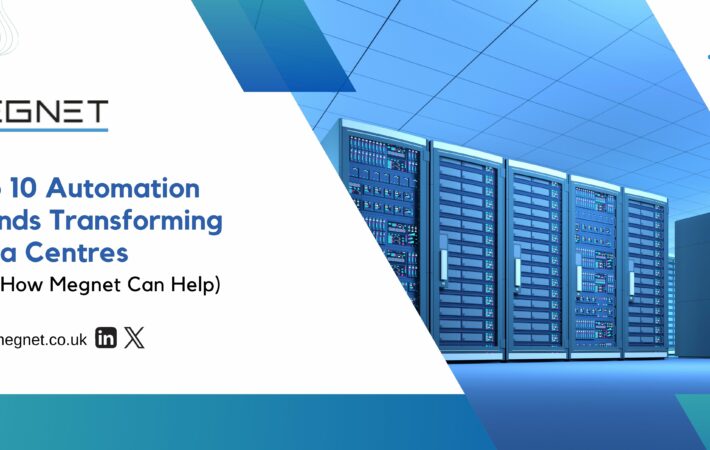
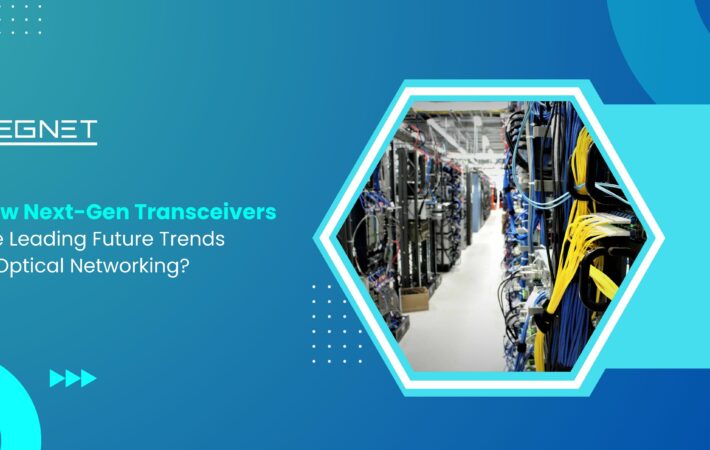
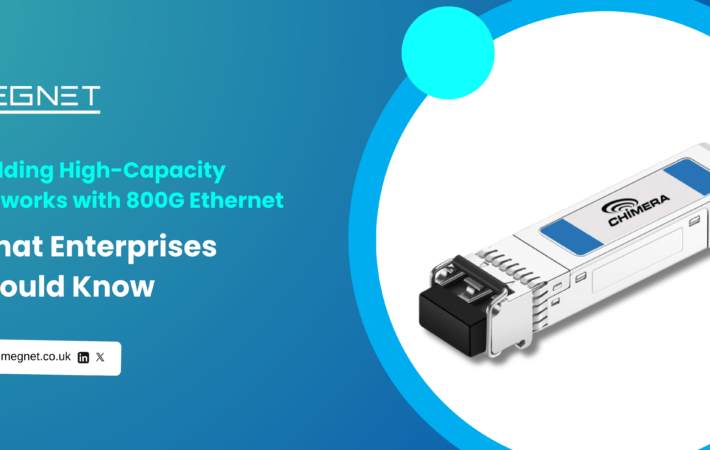
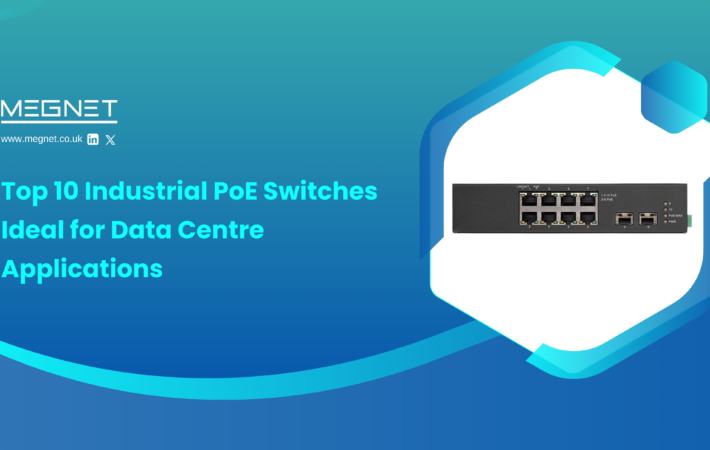



Leave a comment
Your email address will not be published. Required fields are marked *